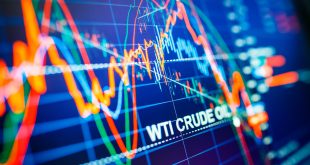Wall Street is gripped by unease as fears of a looming recession intensify, driven by steep tariffs from the U.S. president that have rattled the global economy and raised questions about the Federal Reserve’s independence. Economic outlooks have darkened, with forecasts pivoting from a hopeful 1.3% GDP growth to a stark 0.3% decline for the year. The escalating trade war has already exacted a heavy toll, erasing $6 trillion in market value and leaving investors clamoring for stability—yet the Fed’s autonomy hangs in the balance as pressure mounts for it to intervene.
In the eye of this storm, attention has zeroed in on the Federal Reserve chairman, with many hoping for decisive action to quell the chaos. However, the president has dug in his heels, reinforcing his aggressive trade stance this week and framing the market’s massive losses as a necessary evil to reset global trade dynamics. On social media, he urged resilience and patience, promising “greatness” as the ultimate reward for enduring the pain. Critics counter that this high-stakes bet is bleeding the economy dry, eroding both financial markets and public trust.
The Fed’s reluctance to act swiftly has only sharpened the spotlight on its faltering inflation record. For five straight years, it has missed its 2% target, with projections indicating more of the same through this year and next. Inflation—stoked by pandemic-era disruptions, government spending, and now tariffs—has surged past key benchmarks, undoing decades of price stability.
Some Fed officials still argue that tariff-induced price hikes could prove temporary, hinting at rate cuts to prioritize growth over inflation control. Yet signs of a genuinely tight policy are elusive: unemployment remains low, home prices tower out of reach, and asset values stay elevated, disproportionately benefiting the rich.
The 2% inflation target, a global standard sparked by a offhand comment from a New Zealand official in the 1980s, is losing its grip in the U.S. Last September, the Fed jolted markets with a 50-basis-point rate cut after spotting minor labor market cracks—a move that sparked a stock rally but fanned inflation anew. With tariffs now threatening stagflation, markets are betting on more cuts, though skeptics caution that this could lock in higher inflation expectations, further denting the Fed’s credibility as households struggle with rising costs.
Meanwhile, the administration is prepping for critical trade negotiations, zeroing in on major partners behind persistent deficits to forge a “fair and reciprocal” framework. Though specifics are hazy, markets have reacted with cautious optimism, lifting the S&P 500 by more than 3% in a day—a flicker of resilience amid the turmoil. As the Fed navigates its next steps, it faces a pivotal choice: yield to calls for stimulus and risk its independence, or hold firm and chance deepening the economic rut. For Wall Street and beyond, the outcome remains a high-wire act with no clear safety net.

 Noor Trends News, Technical Analysis, Educational Tools and Recommendations
Noor Trends News, Technical Analysis, Educational Tools and Recommendations




